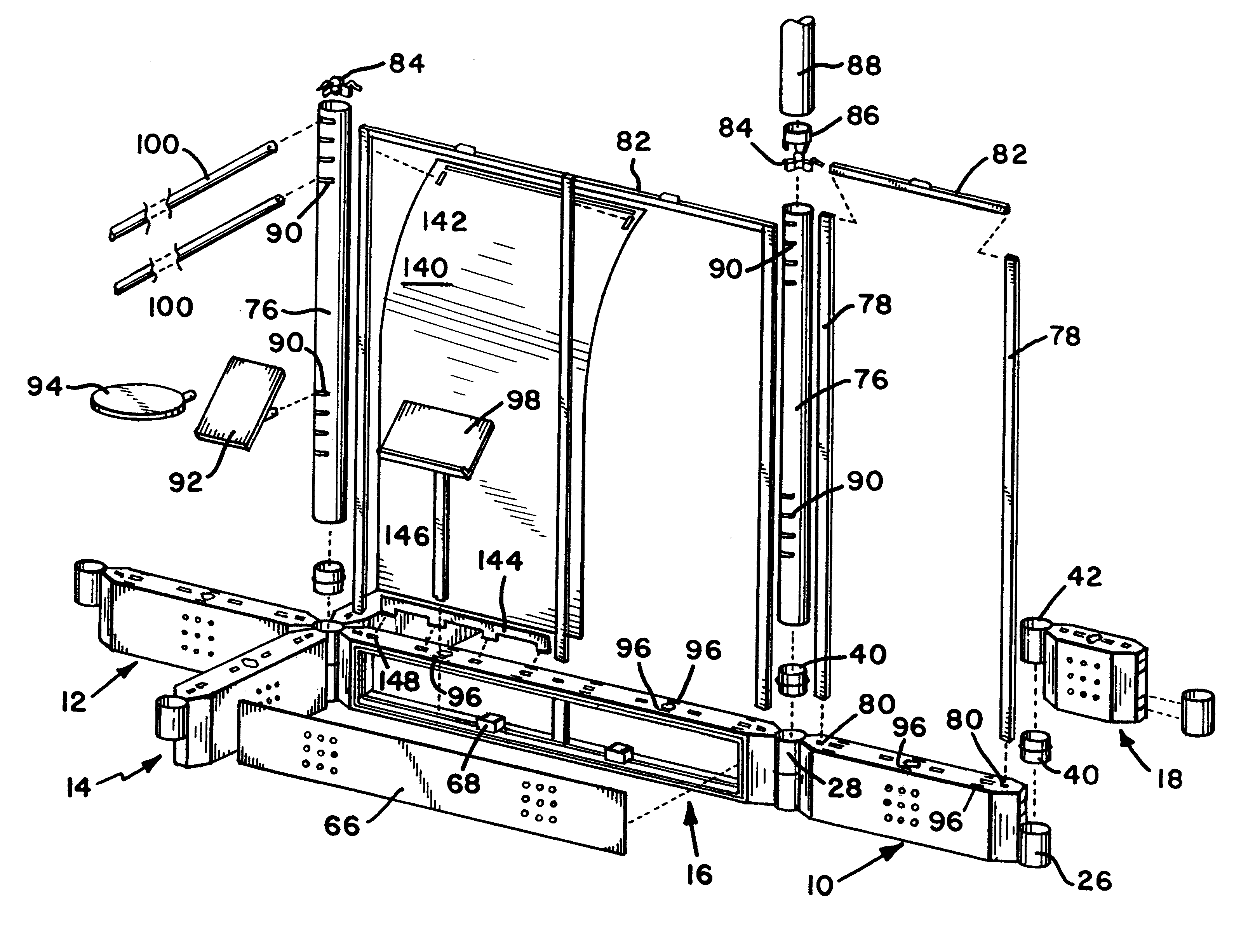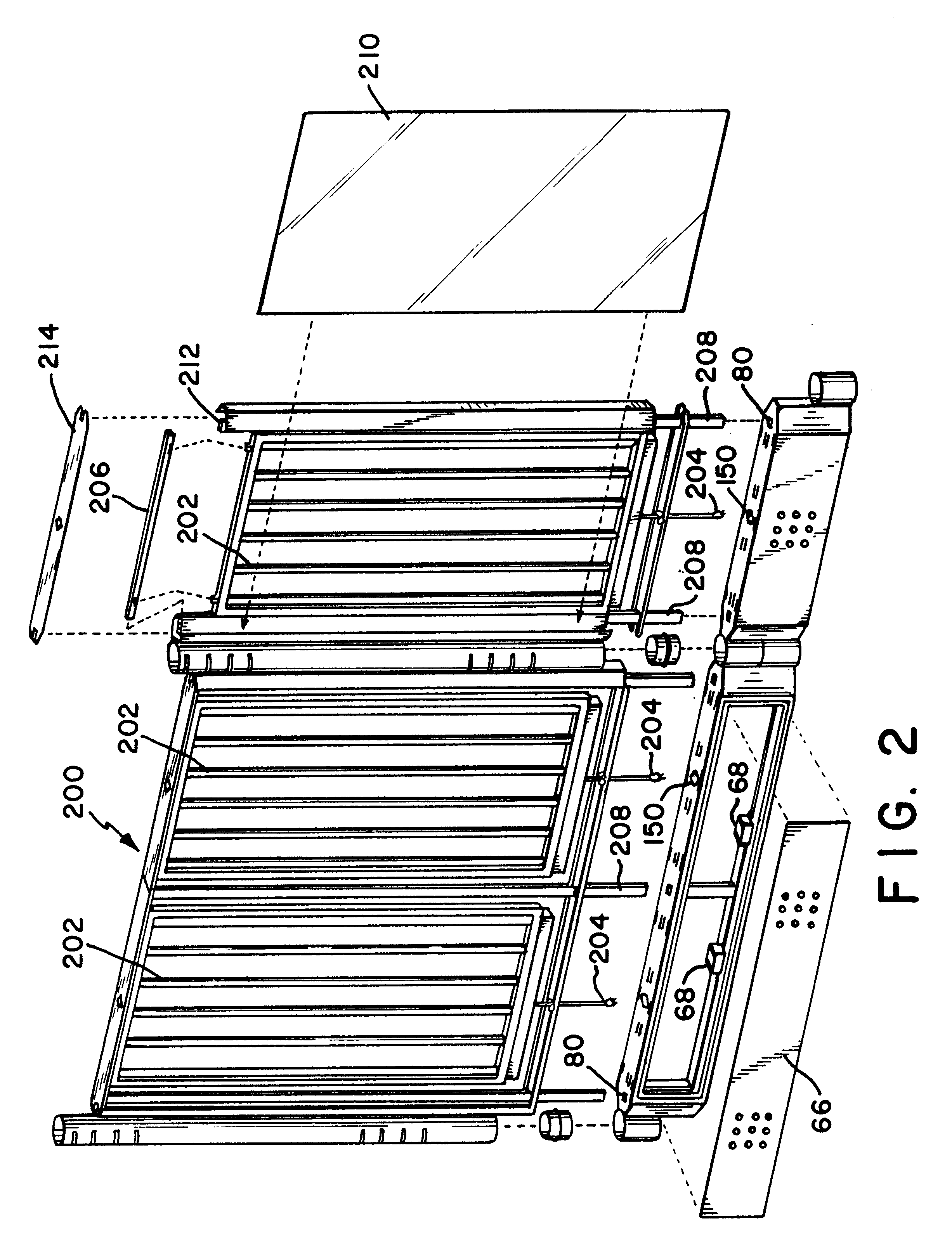Modular display system
a display system and module technology, applied in the field of display systems, can solve the problems of lack of integrated electrical wiring, heavy weight of partition wall systems, and inability to meet the requirements of display systems that are presently available, and achieve the effect of convenient accurate positioning and alignment of sheet material displays, and compact storag
- Summary
- Abstract
- Description
- Claims
- Application Information
AI Technical Summary
Benefits of technology
Problems solved by technology
Method used
Image
Examples
Embodiment Construction
)
In describing the preferred embodiment of the present invention, reference will be made herein to FIGS. 1-9 of the drawings in which like numerals refer to like features of the invention.
Referring to FIGS. 1 and 4, the present invention includes base units 10, 12, 14, 16, 18 connected together to form part of the lower perimeter outline of a display area. Additional base units of the same types will generally be used to complete the display area. The display may be generally linear, and positioned along a wall, or more often, will form an island type booth viewable from all sides.
Referring to FIG. 4, a basic single base unit 10 includes a body 20 having angled ends 22, 24 that are adapted to receive detachable end members 26, 28. The end members preferably comprise cylindrical column collars of the type shown. Alternative shapes for the end members are various types of regular polygons including; hexagons, octagons and the like which permit the end members to be engaged at differen...
PUM
 Login to View More
Login to View More Abstract
Description
Claims
Application Information
 Login to View More
Login to View More - R&D
- Intellectual Property
- Life Sciences
- Materials
- Tech Scout
- Unparalleled Data Quality
- Higher Quality Content
- 60% Fewer Hallucinations
Browse by: Latest US Patents, China's latest patents, Technical Efficacy Thesaurus, Application Domain, Technology Topic, Popular Technical Reports.
© 2025 PatSnap. All rights reserved.Legal|Privacy policy|Modern Slavery Act Transparency Statement|Sitemap|About US| Contact US: help@patsnap.com



